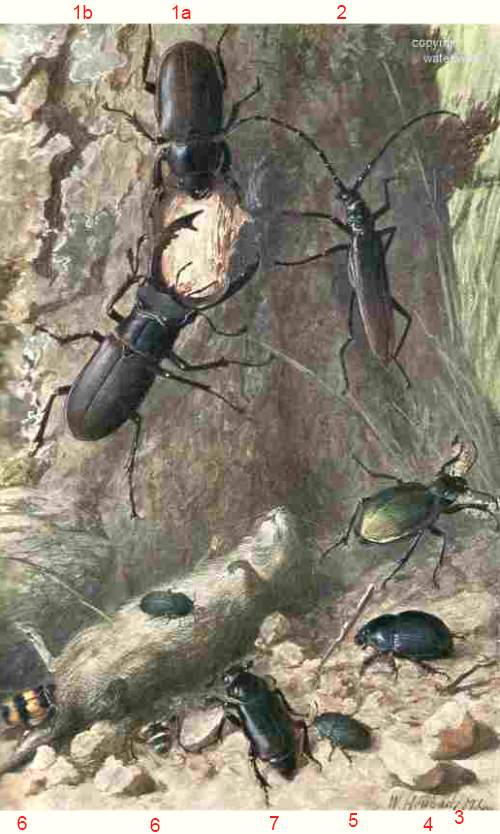Great capricorn beetle
This is one of the largest insects, mainly due to its long antenna. The body lenghth is 6 cm. The great Capricorn beetle belongs to the longhorn beetles, and has a hidden live as a larva. This large larva feeds on decaying wood of living oaks.These oaks are almost always already sick.
Great capricorn beetle economical impact;
This beetle makes the wood of oaks unuseable for using it exept as fire wood. The beetles themselves are very sought by insect collectors.
Great capricorn beetle livecycle
The eggs are laid by the female in ridges of the bark . The larva feeds only on living wood, mostly that of an oak . They will do this at least for more then 2 years (in North of africa ) until 5 years long (North of Europe). They transform into pupae, after that they into the adult form. Before popping out of the bark, the adults remain sheltered in a chamber in the oak during the winter.
Great capricorn beetle stridulation
The male attracts attention by the loud sounds it makes, a process called stradulation. it is made by pressing a hard edge against toughened ridges of the abdomen.
Male capricorn beetle, an illustration from Meyers.

"inlandsche kevers", an illustration from "Schmeil, leerboek der dierkunde", 1911
1 stag beetle 1afemale,1b ,male
2 great capricorn beetle or Cerambyx cerdo
3 Calosoma sycophanta or forest caterpillar hunter
4 Dung beetle
5 May bug
6 Nicrophorus vespillo or burying beetle
7 Nicrophorus germanicus or burying beetle
